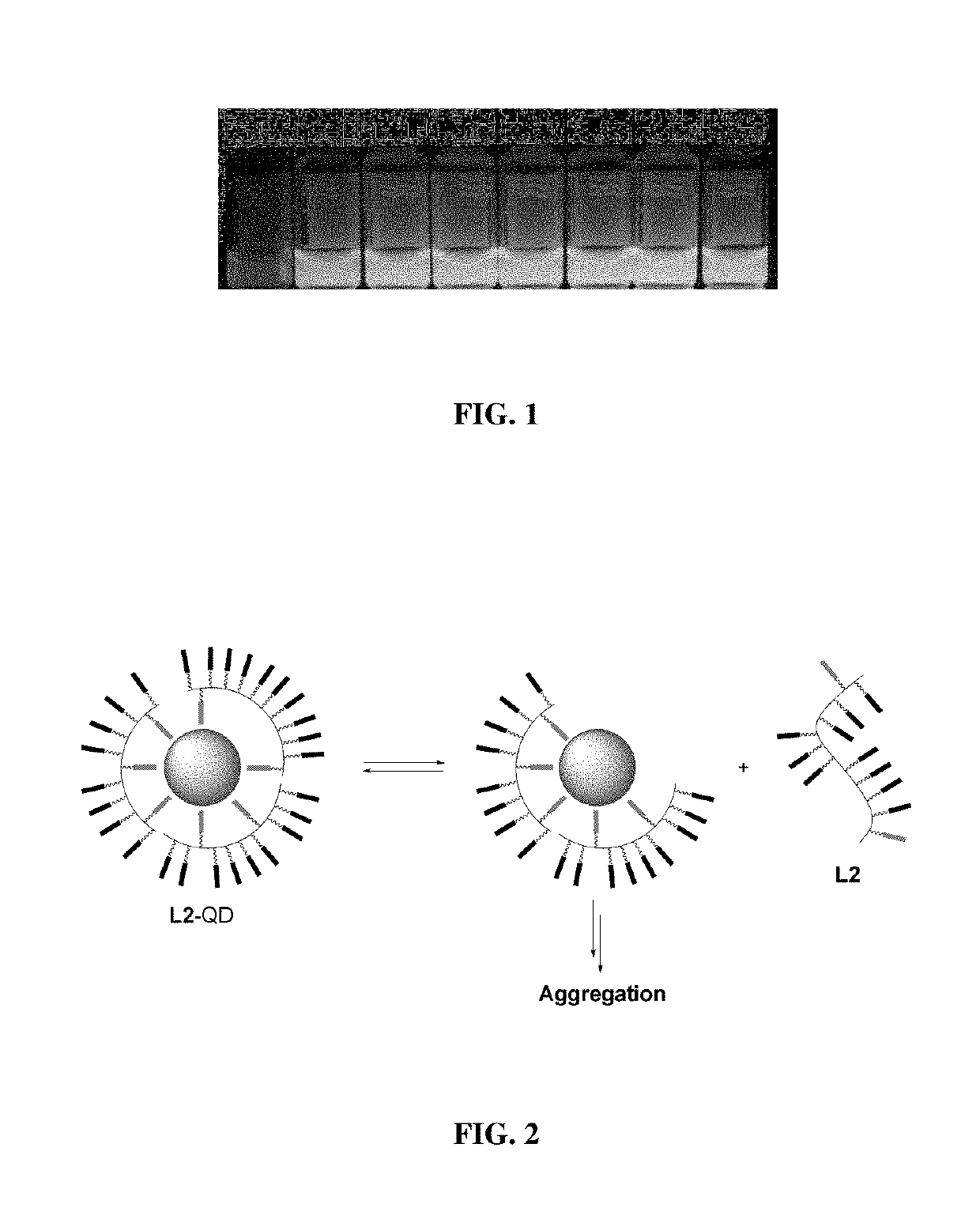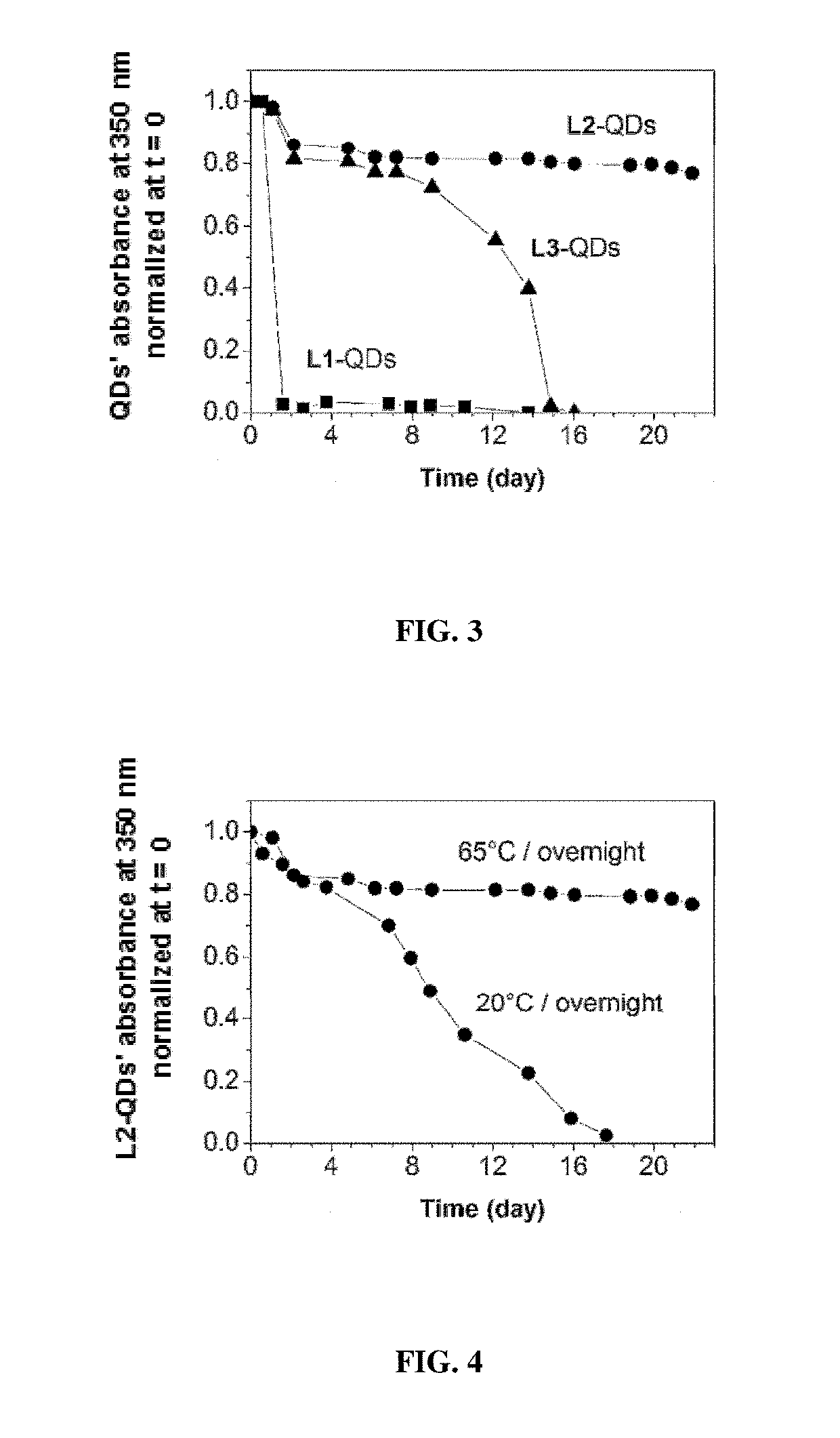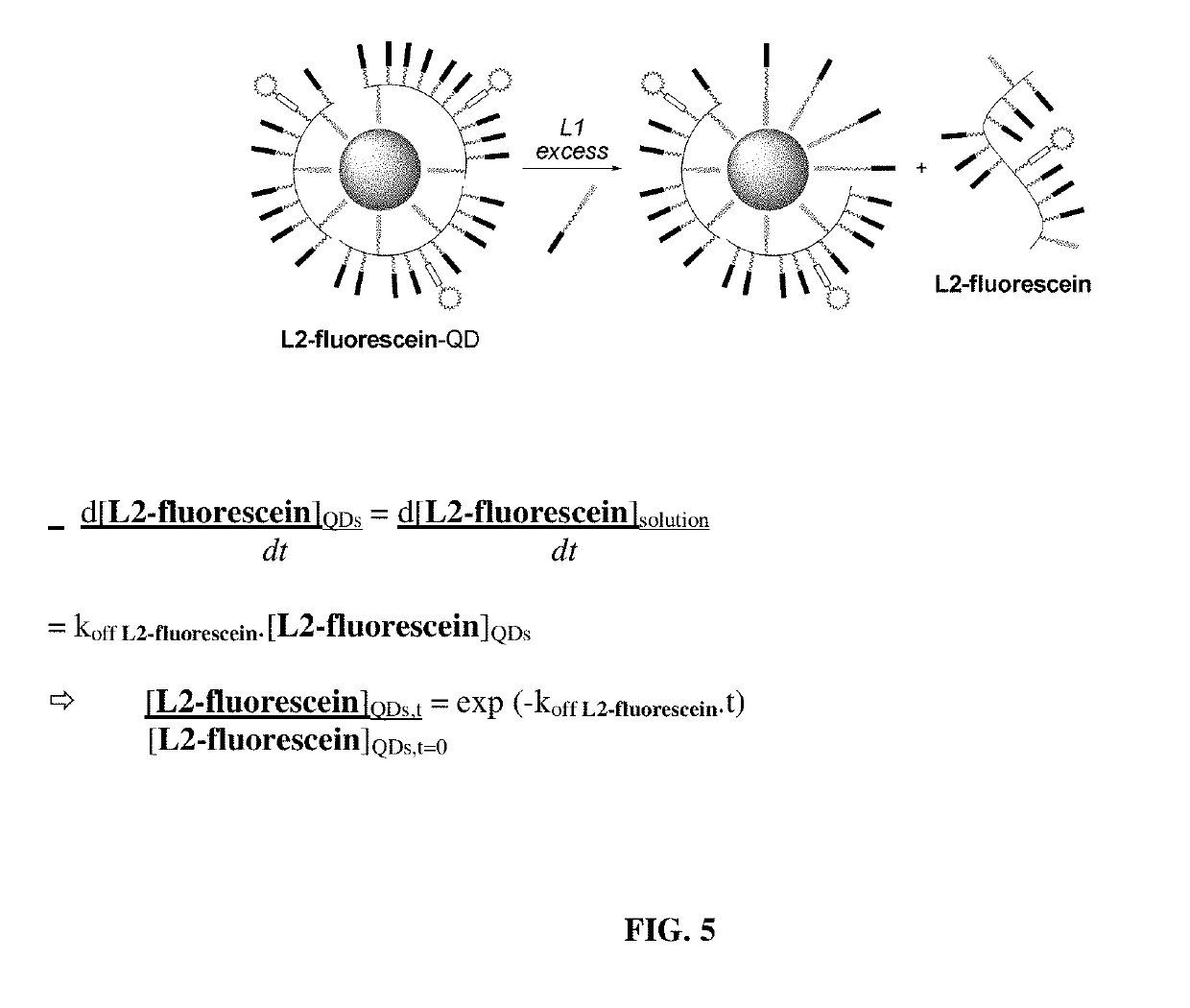Enhanced affinity ligands
a technology of affinity ligands and affinity ligands, applied in the field of affinity ligands, can solve the problems of increasing aggregation and non-specific adsorption, weak limitation of ligand desorption, and loss of colloidal stability and functionality, and achieves high quantum yield, good resistance to photobleaching, and fast fluorescence lifetim
- Summary
- Abstract
- Description
- Claims
- Application Information
AI Technical Summary
Benefits of technology
Problems solved by technology
Method used
Image
Examples
examples
[0375]The present invention is further illustrated by the following examples.
[0376]Ligand Design and Synthesis. To answer the need of increasing ligand affinity for the nanocrystal surface, we directed our efforts towards ligands exhibiting several attachments points and turned logically to polymerization. We thus synthesized a hydrophilic polymer, L2, derived from the small molecule L1 presented above and resulting from a two-step process (Scheme 2). The first step consisted in the radical random copolymerization of two methacrylamides: one containing the precursor of the dithiol anchoring function (monomer A, obtained from the peptidic coupling between thioctic acid and N-(3-aminopropyl)methacrylamide), the other including the sulfobetaine group (monomer B, commercially available). Due to mismatching monomer solubilities, the solvent had to be adjusted to THF / water 1 / 1 (v / v) and the A / B ratio was optimized to a maximum of 20 / 80 to provide a water-soluble polymer. Note that the amo...
PUM
| Property | Measurement | Unit |
|---|---|---|
| molecular weight | aaaaa | aaaaa |
| molecular weight | aaaaa | aaaaa |
| molecular weight | aaaaa | aaaaa |
Abstract
Description
Claims
Application Information
 Login to View More
Login to View More - R&D
- Intellectual Property
- Life Sciences
- Materials
- Tech Scout
- Unparalleled Data Quality
- Higher Quality Content
- 60% Fewer Hallucinations
Browse by: Latest US Patents, China's latest patents, Technical Efficacy Thesaurus, Application Domain, Technology Topic, Popular Technical Reports.
© 2025 PatSnap. All rights reserved.Legal|Privacy policy|Modern Slavery Act Transparency Statement|Sitemap|About US| Contact US: help@patsnap.com



